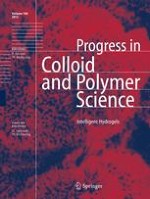2013 | OriginalPaper | Buchkapitel
Relaxation Mechanisms of Physical Hydrogels Networks
verfasst von : Jan Zidek, Andrey Milchev, Josef Jancar, Thomas A. Vilgis
Erschienen in: Intelligent Hydrogels
Aktivieren Sie unsere intelligente Suche, um passende Fachinhalte oder Patente zu finden.
Wählen Sie Textabschnitte aus um mit Künstlicher Intelligenz passenden Patente zu finden. powered by
Markieren Sie Textabschnitte, um KI-gestützt weitere passende Inhalte zu finden. powered by
